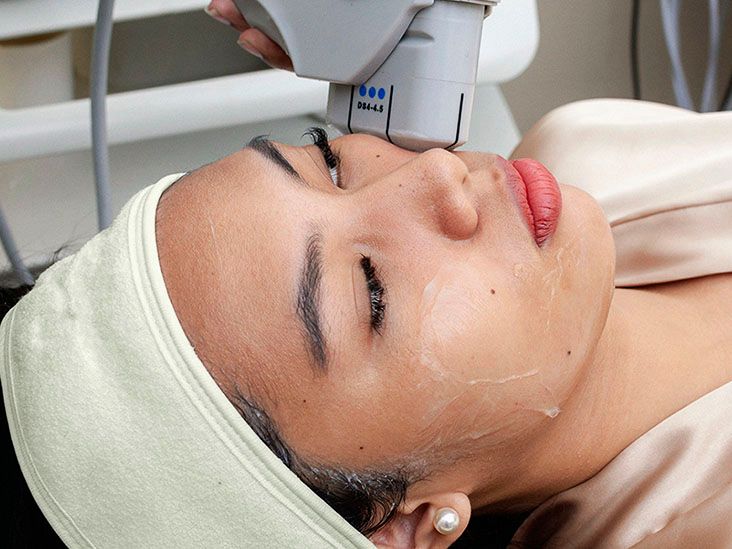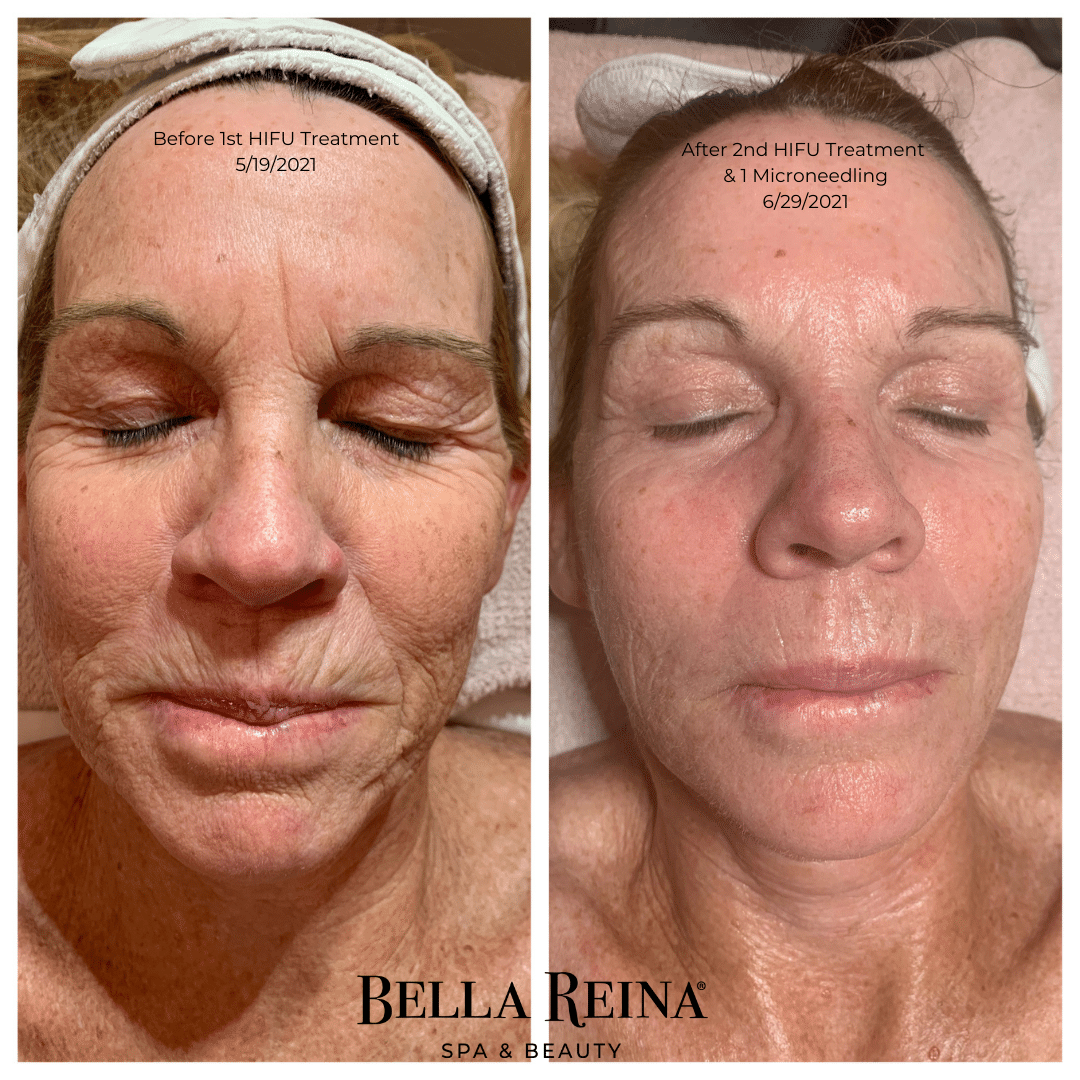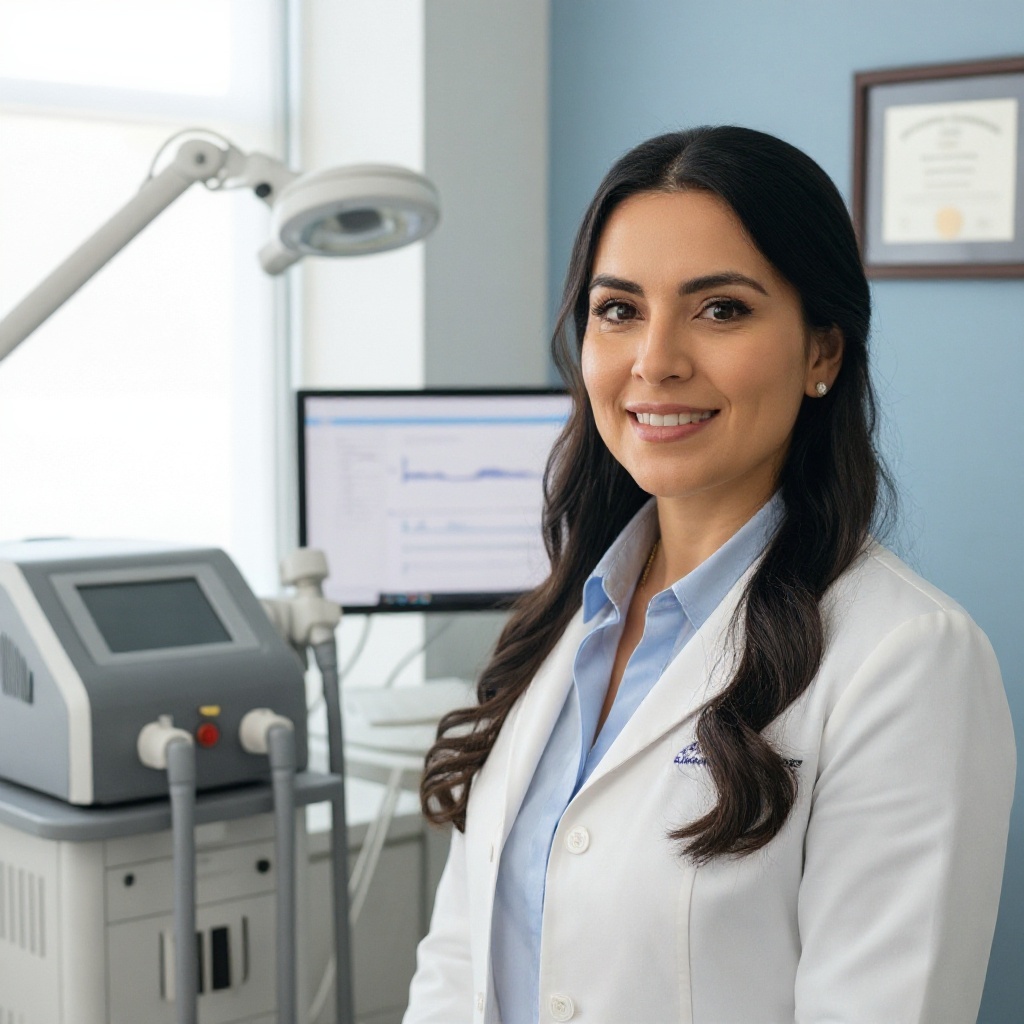HIFU Facial: The Ultimate Guide to Non-Surgical Skin Tightening

Key points
- Reduces Wrinkles and Fine Lines: Smoothes skin on the forehead, around the eyes, and mouth.
- Lifts and Tightens Sagging Skin: Effectively targets droopy eyelids, sagging cheeks, and jowls.
- Defines the Jawline: Sculpts and contours the jaw for a sharper, more defined look.
- Improves Skin Elasticity: Restores a youthful bounce and firmness.
- Completely Non-Invasive: No cuts, needles, or anesthesia required.
- Zero Downtime: You can return to your normal daily activities immediately after the procedure.
In the quest for a youthful appearance, many are turning away from scalpels and seeking innovative, non-invasive solutions. Enter the HIFU facial, a revolutionary treatment hailed as a non-surgical facelift. Using the power of sound, this procedure promises to lift, tighten, and rejuvenate the skin from the inside out, all without a single incision.
This comprehensive guide delves into the science, benefits, risks, and costs of High-Intensity Focused Ultrasound (HIFU) facials. We'll explore who makes an ideal candidate, what to expect during the treatment, and address the controversies surrounding this popular anti-aging technology.
What Exactly is a HIFU Facial?
A HIFU facial is a non-invasive cosmetic procedure that uses High-Intensity Focused Ultrasound energy to combat the signs of aging. It's designed to lift and tighten sagging skin, reduce the appearance of wrinkles, and improve overall skin texture. According to a study published by the National Institutes of Health (NIH), HIFU has been proven to be a safe and effective procedure for improving facial wrinkles and skin laxity.
Think of it as a way to stimulate your skin's natural regenerative processes. The technology was approved by the FDA in 2009 for brow lifts and is now widely used "off-label" for rejuvenating the full face, neck, and even other parts of the body.
The Science: How Does HIFU Work?
The magic of HIFU lies in its ability to deliver precise and powerful ultrasound energy deep beneath the skin's surface without harming the top layer.
Here's a step-by-step breakdown of the process:
- Targeted Energy Delivery: A handheld device delivers focused ultrasound waves to specific depths within the skin. It can target the dermis (1.5mm and 3.0mm) and, crucially, the Superficial Musculoaponeurotic System (SMAS) at 4.5mm. The SMAS is the same foundational layer of tissue that surgeons adjust during a traditional facelift.
- Creating Thermal Injury: The ultrasound energy rapidly heats these targeted tissues to approximately 65-70°C. This creates tiny, controlled thermal coagulation points.
- Triggering Collagenesis: The body perceives this as an injury and kickstarts its natural healing cascade. This process involves producing new, fresh collagen and elastin—the essential proteins that give skin its structure, firmness, and elasticity.
Over the next few months, this new collagen gradually lifts and tightens the skin, resulting in a naturally rejuvenated appearance.
 Image Source: MedicalNewsToday
Image Source: MedicalNewsToday
Key Benefits of a HIFU Facial
Patients choose HIFU for its impressive, surgery-free results. The primary benefits include:
- Reduces Wrinkles and Fine Lines: Smoothes skin on the forehead, around the eyes, and mouth.
- Lifts and Tightens Sagging Skin: Effectively targets droopy eyelids, sagging cheeks, and jowls.
- Defines the Jawline: Sculpts and contours the jaw for a sharper, more defined look.
- Improves Skin Elasticity: Restores a youthful bounce and firmness.
- Completely Non-Invasive: No cuts, needles, or anesthesia required.
- Zero Downtime: You can return to your normal daily activities immediately after the procedure.
The HIFU Treatment Process: What to Expect
Undergoing a HIFU facial is a straightforward process, typically managed within a single session at a clinic.
Before the Treatment
A thorough consultation with a qualified practitioner is essential. They will assess your skin, discuss your goals, and confirm if you are a suitable candidate. Unlike some other cosmetic procedures, there is generally no special preparation required before a HIFU session.
During the Treatment
The procedure itself usually lasts between 30 and 90 minutes.
- Your skin will be cleansed, and an ultrasound gel will be applied.
- The practitioner will use the HIFU device to deliver focused energy pulses to the targeted areas.
- You may experience sensations of heat and tingling. Some describe it as tiny electrical pulses or a light prickling feeling. While discomfort is possible, it is temporary and a sign that the collagen-building process is being activated.
After the Treatment
One of the biggest advantages of HIFU is the lack of recovery time.
- You might notice some slight redness or swelling immediately afterward, but this typically subsides within a few hours.
- There are no specific post-treatment restrictions, but it's wise to follow good skincare practices:
- Avoid extreme temperatures (hot saunas, ice packs) for a few days.
- Use a gentle cleanser and moisturize regularly.
- Apply a broad-spectrum sunscreen with at least SPF 30 daily.
- Stay hydrated to support the skin's healing process.
Results and Longevity: When Will You See a Change?
Patience is key when it comes to HIFU results. While some people report an immediate tightening effect, the most significant changes appear gradually.
- Initial Phase (First few days): You may see a subtle lift as the existing collagen fibers contract.
- Collagen Remodeling Phase (2-3 months): This is when the most noticeable lifting and tightening occur as your body produces new collagen.
- Peak Results (Up to 6 months): Improvements can continue for up to six months following the treatment.
The effects of a HIFU facial can last for a year or more. According to a report by The Skin to Love Clinic, results typically last 12 to 18 months, with longevity influenced by your body's natural aging process and lifestyle factors like sun exposure and diet.
 Image Source: Bella Reina Spa
Image Source: Bella Reina Spa
Potential Risks and The Facial Fat Loss Controversy
HIFU is considered very safe when performed by a trained professional. Common side effects are mild and temporary, including:
- Redness and swelling
- Tingling or tenderness to the touch
- Occasional bruising or numbness
A more significant point of discussion is the potential for facial fat loss. This phenomenon highlights the duality of HIFU technology.
Unwanted Side Effect vs. Desired Outcome
The same thermal energy that stimulates collagen can also destroy fat cells (adipocytes). When done unintentionally—often due to an inexperienced operator or improper depth settings—it can lead to a hollowed or gaunt appearance in areas like the cheeks. This is a significant risk for individuals who are already lean.
However, for patients with concerns about excess fat in areas like the jowls or under the chin, this fat-reducing capability is a desired outcome. A skilled practitioner can strategically use HIFU to contour the face and create a slimmer, more defined facial structure. This is why a personalized assessment and treatment plan are absolutely critical.
Who Is the Ideal Candidate for a HIFU Facial?
The best results are typically seen in individuals with mild to moderate skin laxity.
You may be a good candidate if:
- You are in your 30s or older.
- You have visible skin sagging, fine lines, or wrinkles.
- Your skin has lost some of its firmness and elasticity.
- You want a natural-looking lift without undergoing surgery.
- You have realistic expectations about the outcome.
HIFU may not be suitable for:
- Individuals with severe skin laxity, who may be better candidates for a surgical facelift.
- People with active skin infections, open wounds, or severe cystic acne in the treatment area.
- Those with metallic implants or pacemakers.
- Pregnant or breastfeeding women.
HIFU Cost: What's the Investment?
The cost of a HIFU facial is significantly less than a surgical facelift but still represents a considerable investment. Prices can vary widely depending on the treatment area, geographic location, and clinic prestige. On average, you can expect to pay:
- $1,000 to $4,000 per session for a full-face treatment.
As a cosmetic procedure, HIFU is not covered by health insurance.
Professional vs. At-Home HIFU Devices
With the rise of at-home beauty gadgets, DIY HIFU devices have entered the market. However, there is a vast difference in their efficacy and safety.
| Feature | Professional HIFU | At-Home HIFU |
|---|---|---|
| Power & Efficacy | High-intensity, penetrates to the SMAS layer for significant, lasting results. | Low-intensity, treats only superficial skin layers for subtle, temporary effects. |
| Safety | Administered by trained professionals who understand facial anatomy. | Lower risk due to less power, but potential for user error without professional guidance. |
| Results | Noticeable lifting, tightening, and contouring. | Mild firming and texture improvement at best; best for maintenance. |
| Cost | High per-session cost. | Lower one-time purchase cost. |
For genuine, safe, and effective results, professional treatment is strongly recommended. At-home devices lack the power to produce the structural changes that make clinical HIFU so effective.
*Video Reference: Dr. Davin Lim explains skin tightening with ultrasound technology. Source: [YouTube](https://www.youtube.com/watch?v=XkqDH2mM3xY)*The Final Verdict
The HIFU facial stands out as a powerful and effective option for those seeking meaningful facial rejuvenation without the downtime and risks of surgery. By harnessing the body's own regenerative power, it delivers natural-looking results that can turn back the clock on skin aging.
Success, however, hinges on proper candidacy and, most importantly, the skill of the practitioner. A thorough consultation with an experienced professional is the first and most crucial step to ensuring the treatment is tailored to your unique anatomy and aesthetic goals.
References
- Park, H., et al. (2015). "High-Intensity Focused Ultrasound for the Treatment of Wrinkles and Skin Laxity in Seven Different Facial Areas." Annals of Dermatology. Available at: https://pmc.ncbi.nlm.nih.gov/articles/PMC4695420/
- Dresden, D. (2020). "What is a HIFU facial, and does it work?" MedicalNewsToday. Available at: https://www.medicalnewstoday.com/articles/hifu-facial
- The Skin to Love Clinic. (2023). "12 Things You Should Know About the HIFU Facial." Available at: https://www.theskintoloveclinic.co.uk/blog/hifu-facial/

About the author
Elena Vance, MD, is a double board-certified dermatologist and pediatric dermatologist. She is an assistant professor of dermatology at a leading medical university in California and is renowned for her research in autoimmune skin disorders.